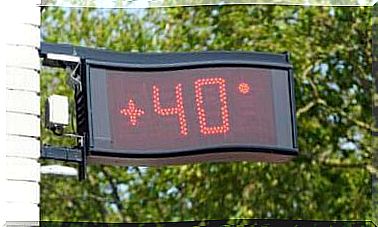All About Heart Murmur Classification

Today we are going to talk about the classification of heart murmurs. Turbulence in the blood stream as it passes through the heart and great vessels causes tremors. This, in turn, causes a heart murmur.
In other words, it is sounds that appear during the heartbeat cycle that cause turbulent blood flow in or near the heart. People use a stethoscope to hear a heart murmur.
For example, you can be born with it, but it can appear at any time in life. If you’re born with it, it’s called a congenital heart murmur.
Above all, it must be made clear that a heart murmur is not a disease. However, it must be kept under control as it can stimulate an undiagnosed heart problem.
Classification of heart murmur

There are different classifications of heart murmurs. Characteristics of heart murmurs should be specified based on their intensity and sound frequency, as well as location on the chest and location in the cardiac cycle, if they occur during systole or diastole.
The volume of blood responsible for the turbulent blood flow or the voltage gradient that causes the turbulence determines the intensity of the heart murmur. It is important to note that the degree of noise is not necessarily related to the severity of the heart injury.
What is the classification of a heart murmur?
The most widely used classification system was first introduced by Levine in 1933. He relied on intensity, a term explained above, to classify this heart condition. According to Levine, there are 6 different degrees of heart murmur, depending on the intensity:
- 1st degree: barely audible. The only way to hear it may be to listen to the patient’s different cardiac cycles.
- 2nd degree: these are soft, but audible.
- 3rd degree: These are moderate and palpable vibrations in the chest wall due to the passage of blood.
- 4th degree: This is an intense heart murmur accompanied by a tick.
- 5th degree: This is a very intense heart murmur. It can be heard even by barely touching the chest with the stethoscope.
- 6th degree: A stethoscope is not necessary to hear this heart murmur because it is so intense.
Other Classifications of Heart Murmur

Apart from classifying heart murmurs based on their intensity, they can also be grouped based on other characteristics. We can classify them as diastolic or systolic if we take the duration into account.
Based on shape, they can be constant, increase, decrease, or a combination of the latter two. As for location, this refers to where the noise is most intense. There are therefore 6 auscultation points on the front of the chest to identify a murmur:
- In the second intercostal space on the right.
- From the second to the fifth intercostal space on the left.
- In the fifth intercostal space in the left midclavicular line.
In addition, heart murmurs can be classified according to their radiation. This characteristic refers to where the noise radiates. It usually goes in the same direction as blood flow. Finally, depending on the tone, it can be low or high. This means, among other things, that it can be musical, blowing or running.
Therapy

Treatment will depend on the underlying cause of the heart murmur. Heart murmurs are usually harmless, so it usually doesn’t need to be treated. Therefore, follow-up tests are sometimes needed to make sure they are not causing undiagnosed heart disease.
If treatment is needed, it will target the cause of the noise. For example, if functional noise is caused by a fever or hyperthyroidism, it will disappear once doctors have treated the condition.
Sometimes medication alone is not enough to treat the causes of a heart murmur. Sometimes surgery is required. Depending on the condition, your doctor may recommend one of these options to treat a damaged or punctured valve:
- Balloon Valvotomy (English link)
- annuloplasty
- Restore Structural Support
- Open heart surgery
- valve repair
If you think you may be experiencing a heart murmur, seek immediate medical attention. Your doctor will assess the problem and determine how to treat it further.









